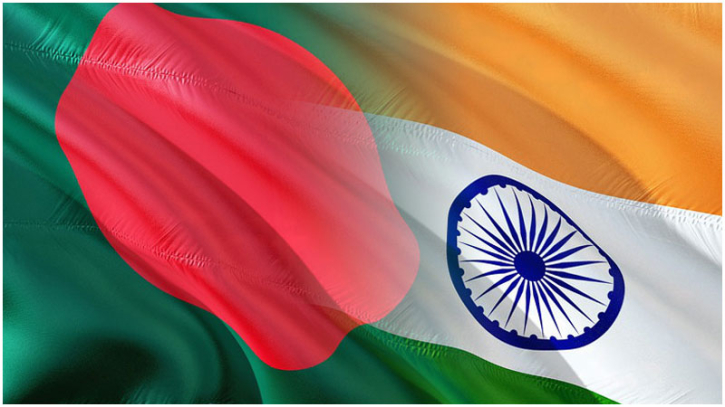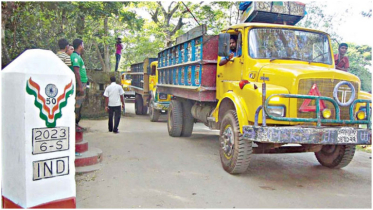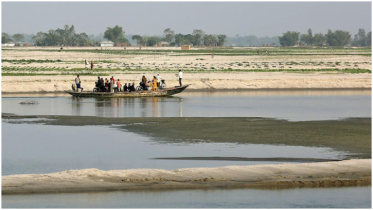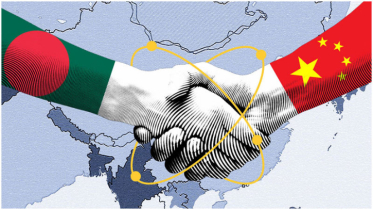Debunking the specter of Bangladeshi involvement in Murshidabad violence

Between 8 and 13 April 2025, a series of protests and violent incidents engulfed Murshidabad, a Muslim-majority district along the Indo–Bangladeshi border under the Indian state of West Bengal, over the adoption of the controversial Waqf (Amendment) Act, 2025 in the Indian Parliament earlier this month. Three people were killed in the violence, and more than 274 people have been detained over the incidents.
On 16 April, Chief Minister of West Bengal Mamata Banerjee accused Bangladesh of involvement in the violence in Murshidabad, and alleged that there are a number of Bangladeshi citizens among those who have been arrested in connection with the violence. This is the latest in a series of continuous rhetorical attacks on Bangladesh on the part of the Indian political, security, and media establishment.
Since the change of government in Bangladesh on 5 August 2024, India has orchestrated a coordinated and comprehensive psychological warfare against the country. As a part of it, the Indian government, as well as Indian commentators, think tanks, and media outlets, has been waging an extensive disinformation campaign against Bangladesh. From the very beginning, New Delhi has been accusing Bangladesh of persecuting its ethnic and religious minorities, particularly Bangladeshi Hindus. Between August and December 2024 alone, at least 72 Indian media outlets propagated misinformation and disinformation about Bangladesh. However, the accusations forwarded by the Chief Minister of West Bengal have added a new dimension to the anti-Bangladeshi rhetoric of the Indian establishment. Her accusations – alleged Bangladeshi interference in the internal affairs of India and reported direct involvement of Bangladeshi citizens in fomenting violence inside India – represent a new line of argument against Bangladesh.
The accusations are, of course, completely fabricated. On 3 and 4 April, the Indian Lok Sabha and Rajya Sabha, controlled by the incumbent Hindu nationalist Bharatiya Janata Party (BJP), passed the Waqf (Amendment) Act, 2025, in spite of strong opposition from major opposition parties and the Indian Muslim community. Under Islamic law, a waqf is an inalienable endowment, typically in the form of donation of a building, plot of land, or other assets for religious or charitable purposes with no intention of reclaiming the assets. There are 872,324 immovable waqf properties in India, and collectively, the waqf boards are the third-largest landowner in India after the Indian Railways and the Indian Armed Forces. Thousands of mosques, schools, shrines, orphanages, hospitals, and other religious or charitable establishments are located on these waqf properties. These assets, worth approximately $14.22 billion, hold substantial spiritual, cultural, and practical significance for India’s 200-million-strong Muslim community.
However, India’s waqf properties have been subjected to illegal encroachments for years, and the trend has accelerated under the BJP-led government. While the Indian government has justified its takeover of waqf lands by citing pseudo-legal arguments, these actions constitute a broader and deliberate policy of disenfranchisement of Indian Muslims and aggrandizement of Hindu nationalist and Islamophobic sentiments. For instance, in January 2025, the Indian government demolished some 250 properties, including homes, shops, and a century-old mosque, in Ujjain, a city in the Indian state of Madhya Pradesh, to clear 2.1 hectares of land belonging to the Madhya Pradesh Waqf Board for the implementation of the $1 billion-worth Mahakal Corridor project surrounding the famed Mahakaleswar Temple.
The adoption of the Waqf (Amendment) Act, 2025 has been justified on the grounds of transparency and inclusiveness. However, in practice, the law accords the Indian government the right to confiscate waqf lands at will, compels the waqf boards to include non-Muslim members, and prevents recently converted Muslims from making waqf. Accordingly, the law is being vigorously opposed by the Indian Muslim community, and protests have taken place throughout India, including in Delhi, Ahmedabad, Chennai, Kolkata, and Murshidabad, against the new waqf law. Moreover, numerous Indian political parties, including the Indian National Congress (INC), the Communist Party of India (Marxist) [CPI(M)], and the Dravida Munnetra Kazhagam (DMK), have strongly opposed the law.
In fact, the All India Trinamool Congress (AITC), the ruling party in West Bengal, and Mamata Banerjee herself have criticized the new waqf law. However, while Banerjee’s allegations against Bangladesh over the violence in Murshidabad are seemingly at odds with her stance on the waqf law, it makes perfect sense in West Bengal’s domestic political context.
Since its replacement of the Left Front as the political heavyweight in West Bengal in 2011, the AITC has been governing the state for more than a decade. However, the rise of the BJP’s West Bengal branch in recent years, coupled with the growing disenchantment among the people of West Bengal with the AITC, has motivated the AITC to incorporate some of BJP’s rhetoric into its political lexicon. The AITC seeks to offset the rise of the BJP in West Bengal by accommodating the Hindu nationalist segment of the state’s population. Since Muslims constitute approximately 27% of West Bengal’s population and a substantial vote bank for the AITC, the AITC cannot realistically imitate BJP’s anti-Muslim rhetoric.
Under such circumstances, Bangladesh appears to be a perfect scapegoat for the political elite of West Bengal. Since they failed to prevent the violence in Murshidabad, and since they cannot antagonize the Muslims of West Bengal owing to electoral politics, they found it convenient to pin the blame on Bangladesh. Apparently, they believed that given the current state of Indo–Bangladeshi relations, it would be easy to lead people to believe that the violence in Murshidabad was the result of external machinations (i.e. from Bangladesh), and not an outcome of the failure of the state government.
However, in an interesting twist, the rivalry between the AITC and the BJP’s West Bengal wing has resulted in the unraveling of Mamata’s allegations. Keya Ghosh, one of the key spokespersons of BJP – West Bengal, countered the allegations by stating that those involved in killings in Murshidabad were local residents, and if there are indeed Bangladeshis among the detainees, the West Bengal government should release their identities. However, the West Bengal government is yet to release any evidence of the alleged involvement of Bangladesh in the incidents in Murshidabad.
Thus, the protests and violence in Murshidabad are India’s internal affairs, and there is no evidence of the involvement of Bangladesh or Bangladeshi citizens in these incidents. Therefore, the allegations of Bangladeshi involvement in violence in Murshidabad are not grounded in reality, but rooted in the internal political machinations of West Bengal.
Writer: Md. Himel Rahman is a Dhaka-based freelance analyst on international and strategic affairs. His articles have been published on a number of platforms, including The Interpreter, The Diplomat, South Asian Voices, Eurasia Review, The Daily Star, and The Daily Observer.
Copyright: Eurasia Review
.png)




